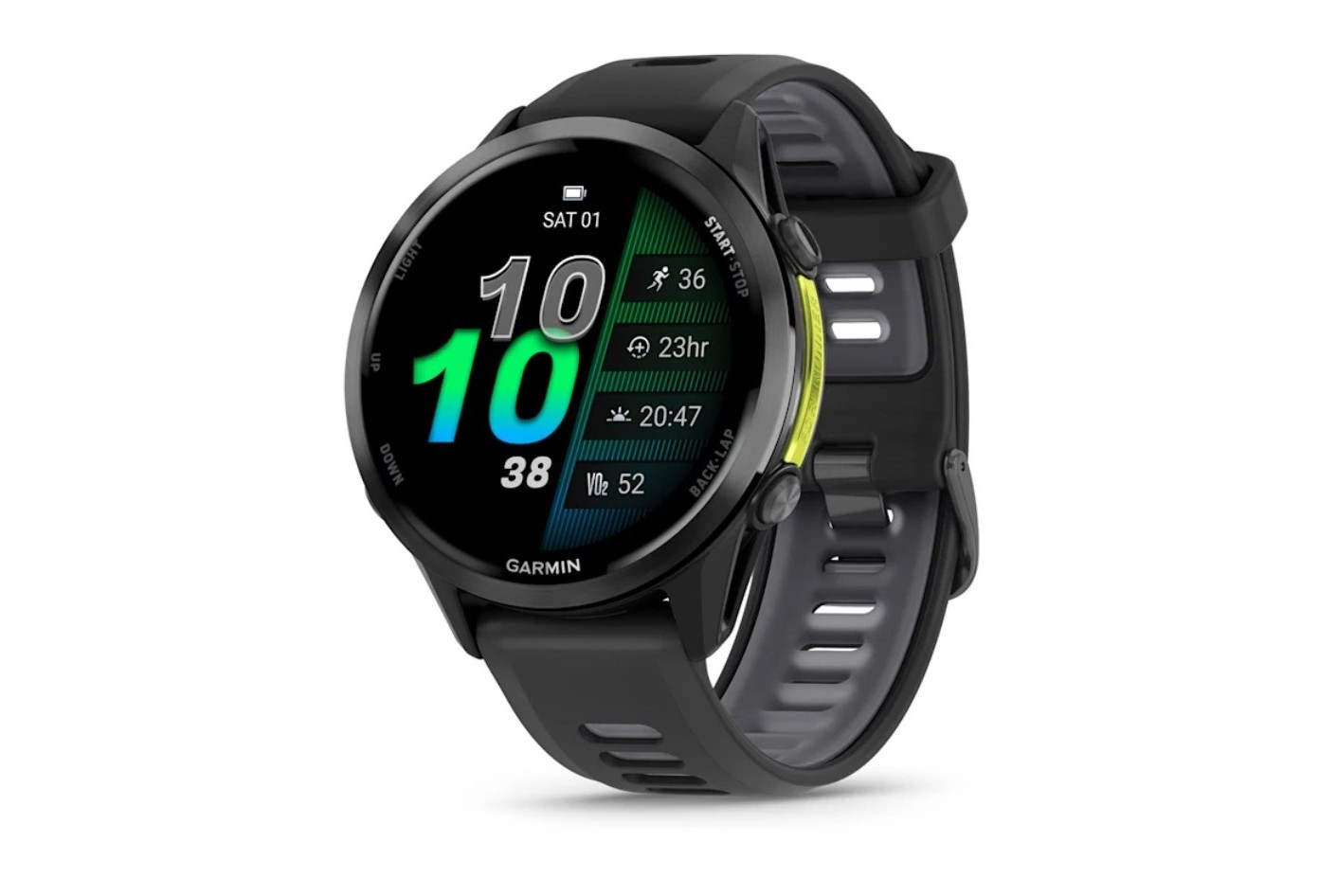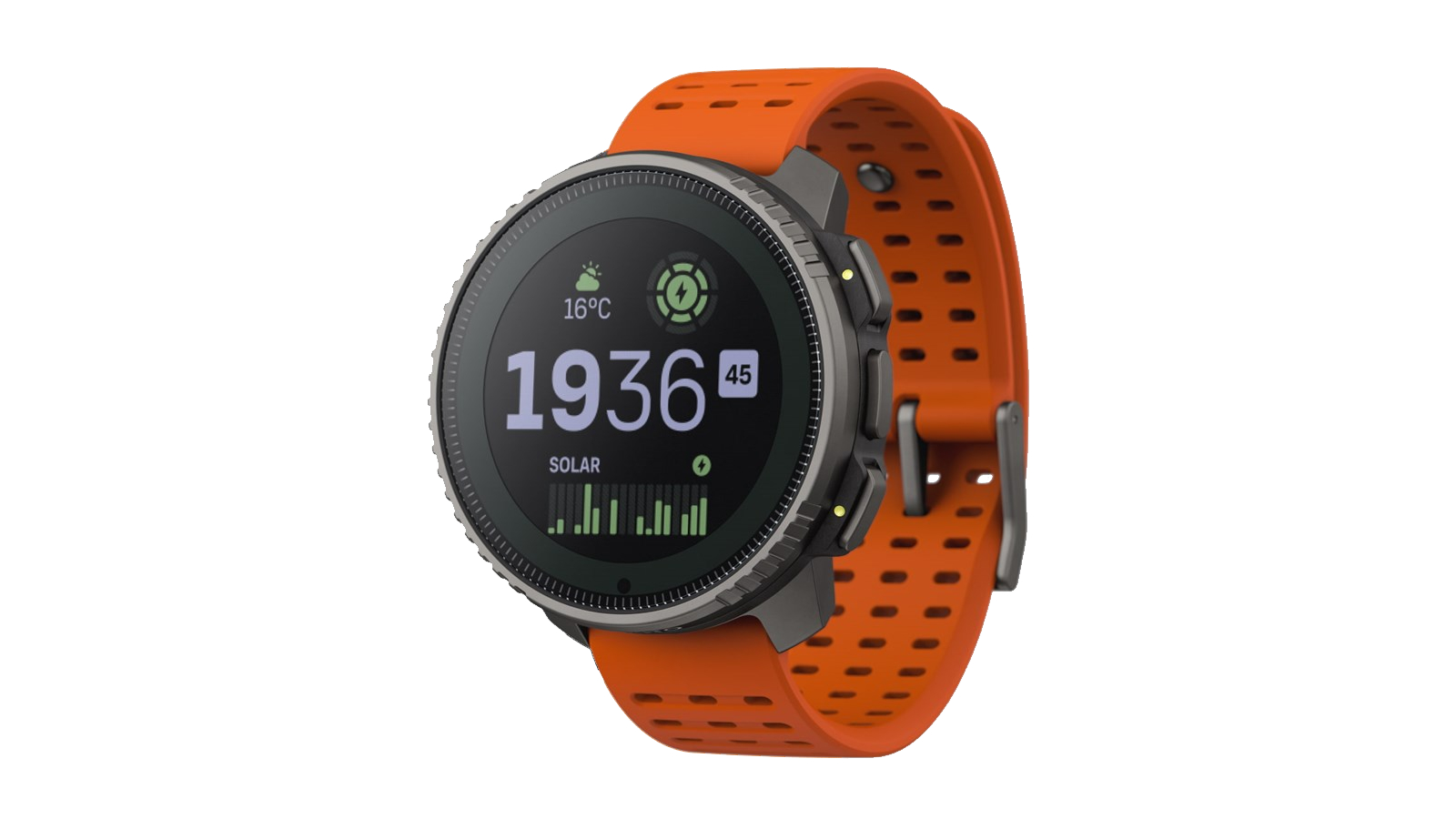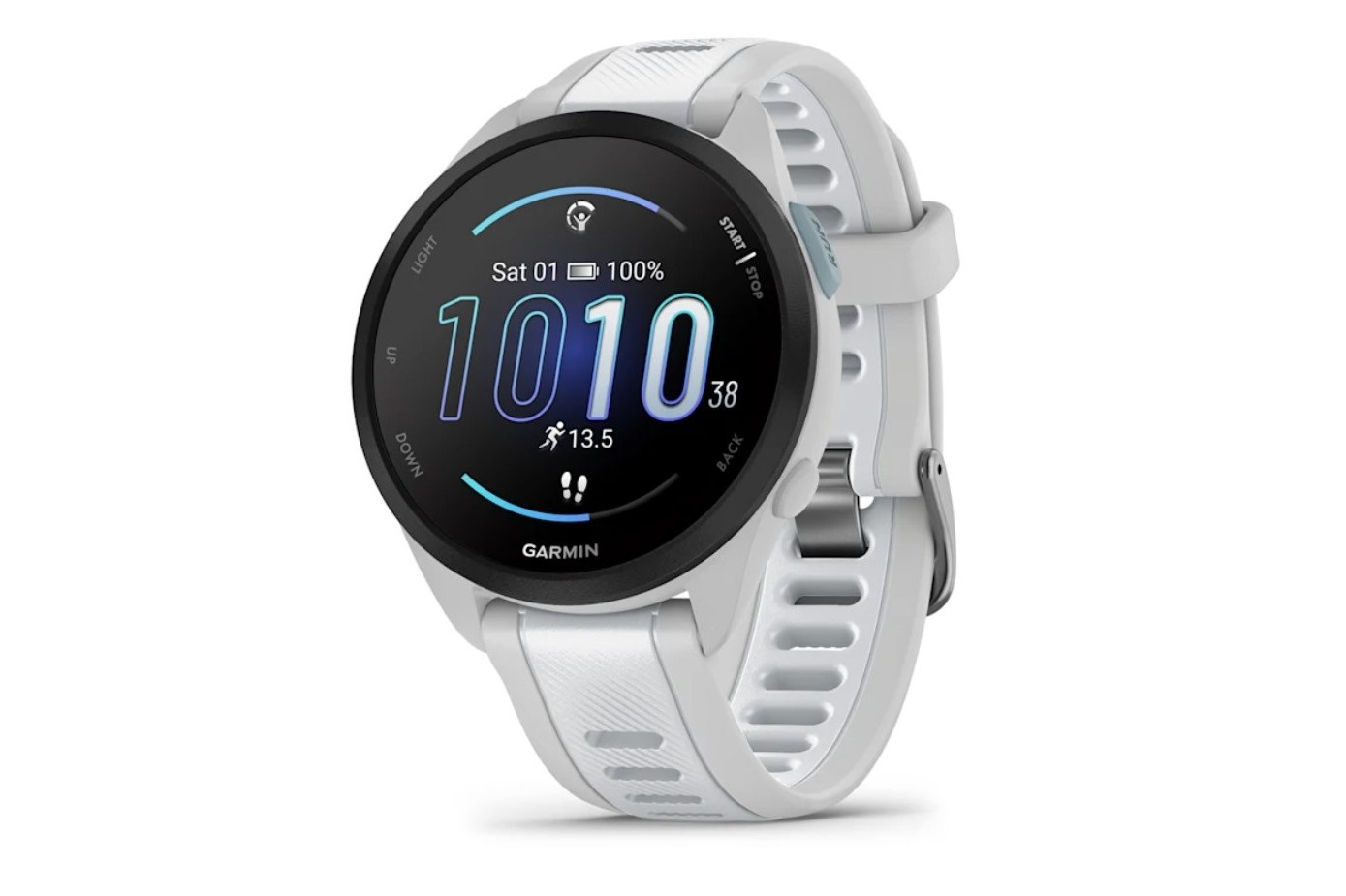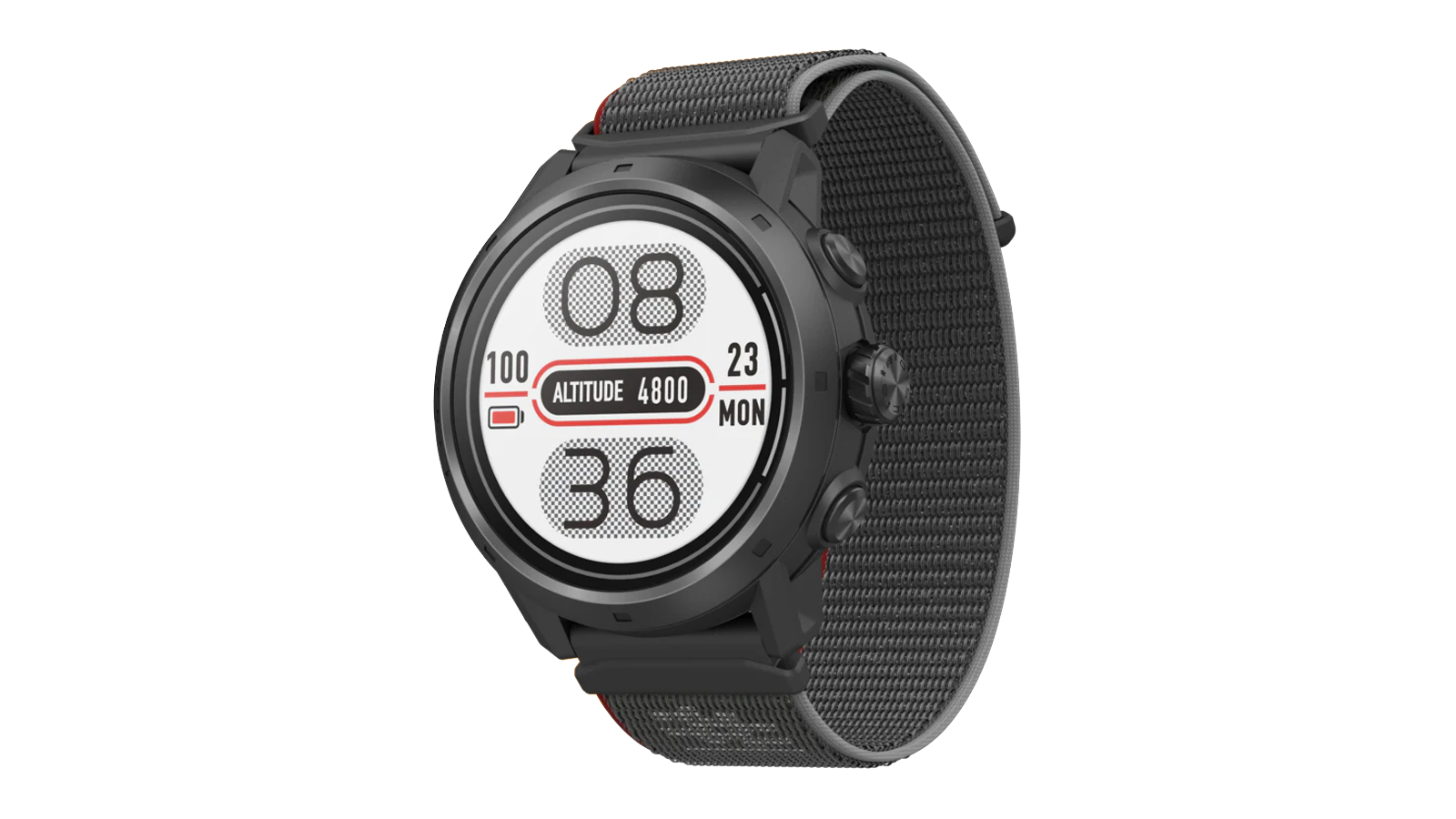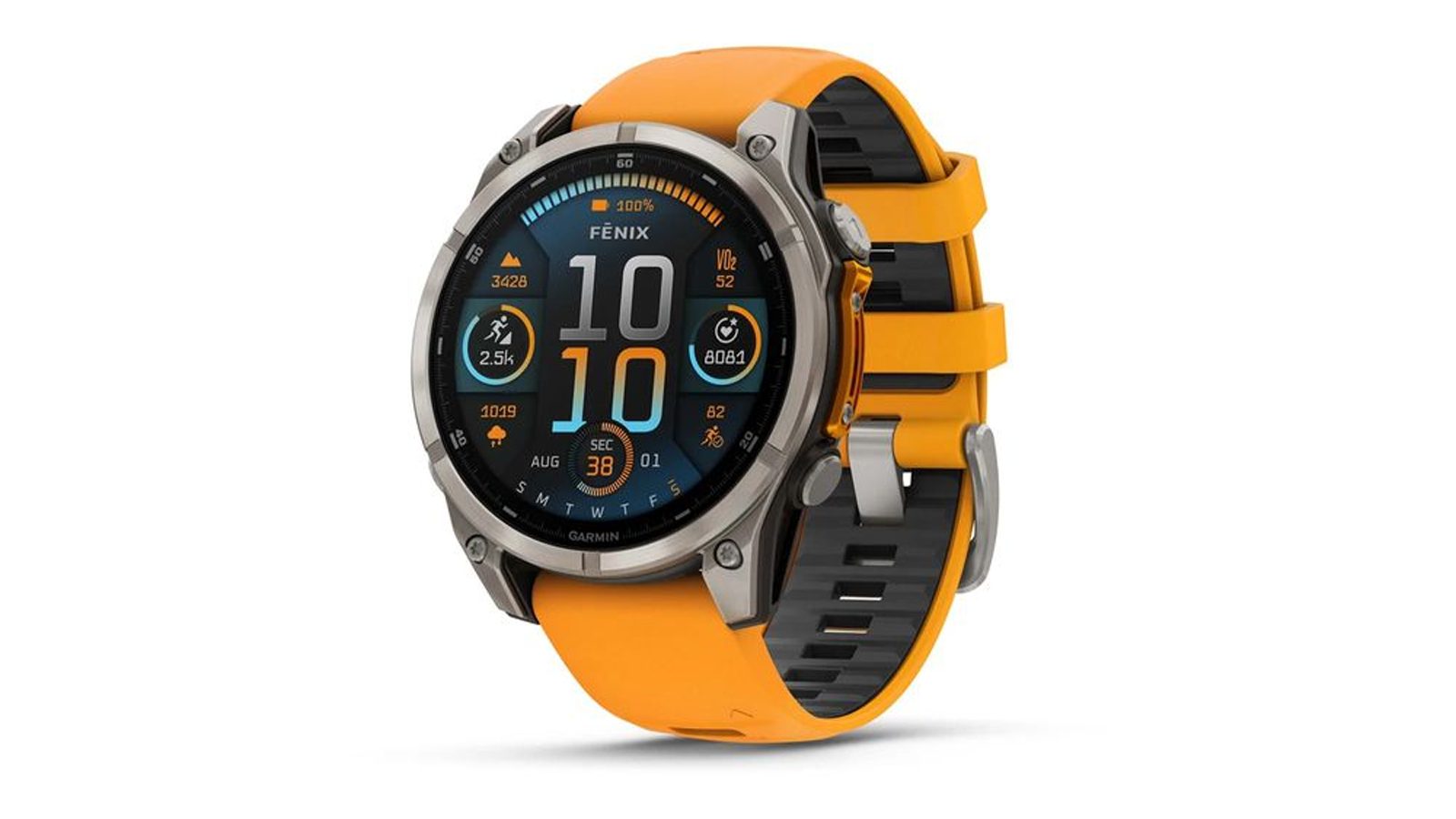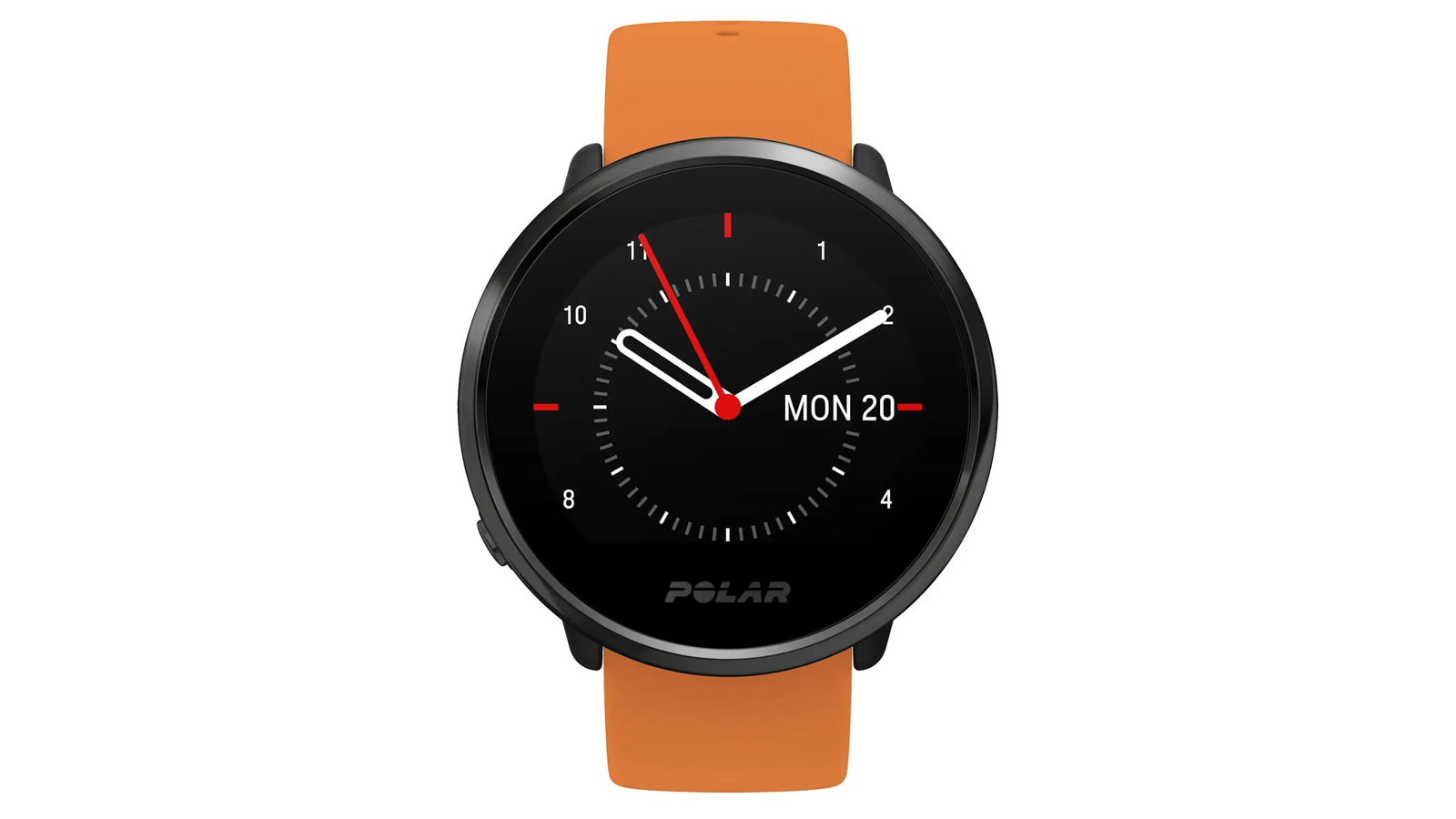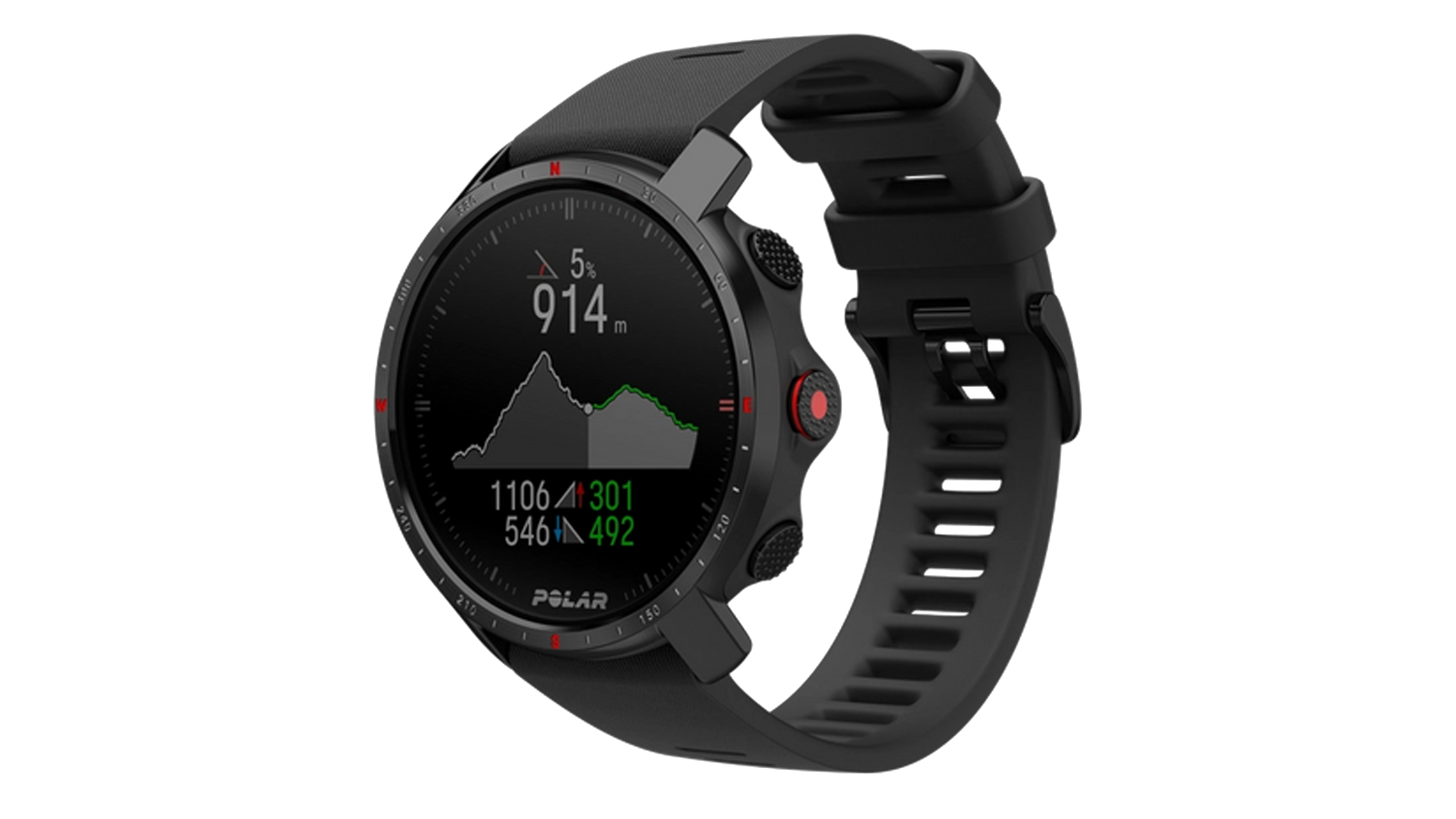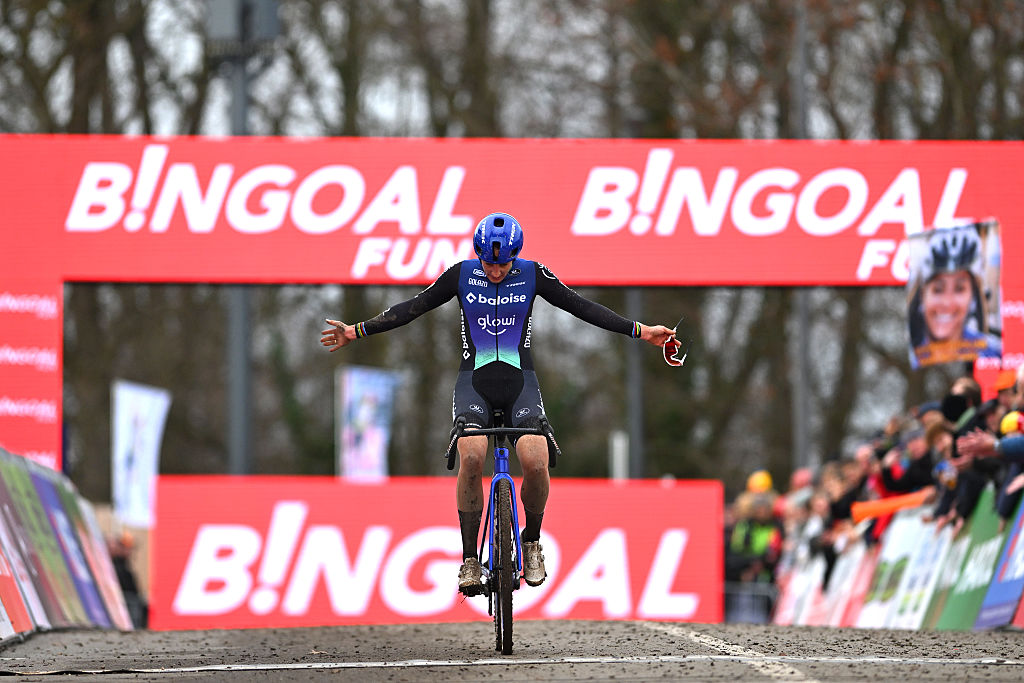Best triathlon watches: One-stop recording of your race
The best triathlon watches will give you easy transitions between legs as well as multisport tracking
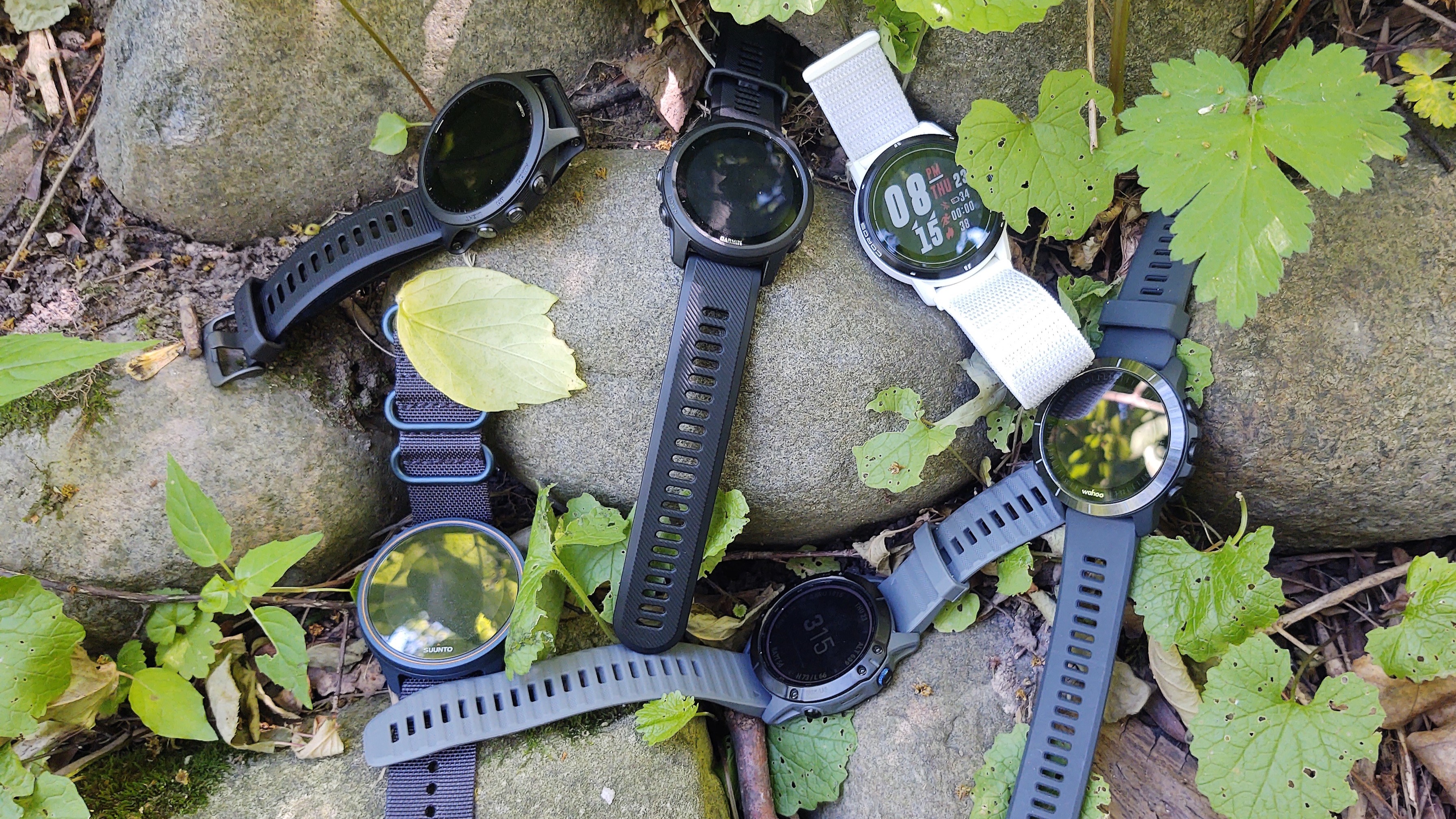
The best triathlon watches offer multisport tracking and easy transitions so that you can follow each leg of your races and monitor your training in the water, on the bike and on the run, as well as any cross-training you're doing.
There's more and more tech built into triathlon watches and multisport athletes, with accurate GPS tracking augmented with heart rate and pulse oximetry and even ECG measurement.
You'll often get heart rate variability, sleep quality and other data too, to track your fitness and fatigue levels, with tri-watches and their companion apps advising you when to train and when to rest up.
For triathletes in training, these are fantastic features. The best triathlon watches also track all three legs accurately and you can get seamless transitions, as well as great battery life, even when using GPS.
In this article, we’re going to tell you everything you need to know about the best triathlon watches. We also have guides to the best cycling watches, as well as the best bike computers, if you're looking for a different device to log your activity.
We reckon the Garmin Forerunner 970 is the best overall, with a huge array of functions in a lightweight, rugged package that's cheaper than the Garmin Fenix 8, but still has a bright AMOLED display that can be set to be always on.
Read on for our pick of the best watches for triathletes, or head to the bottom of the page for our guide to how to choose the best triathlon watch for your needs.
Quick list: Best triathlon watches
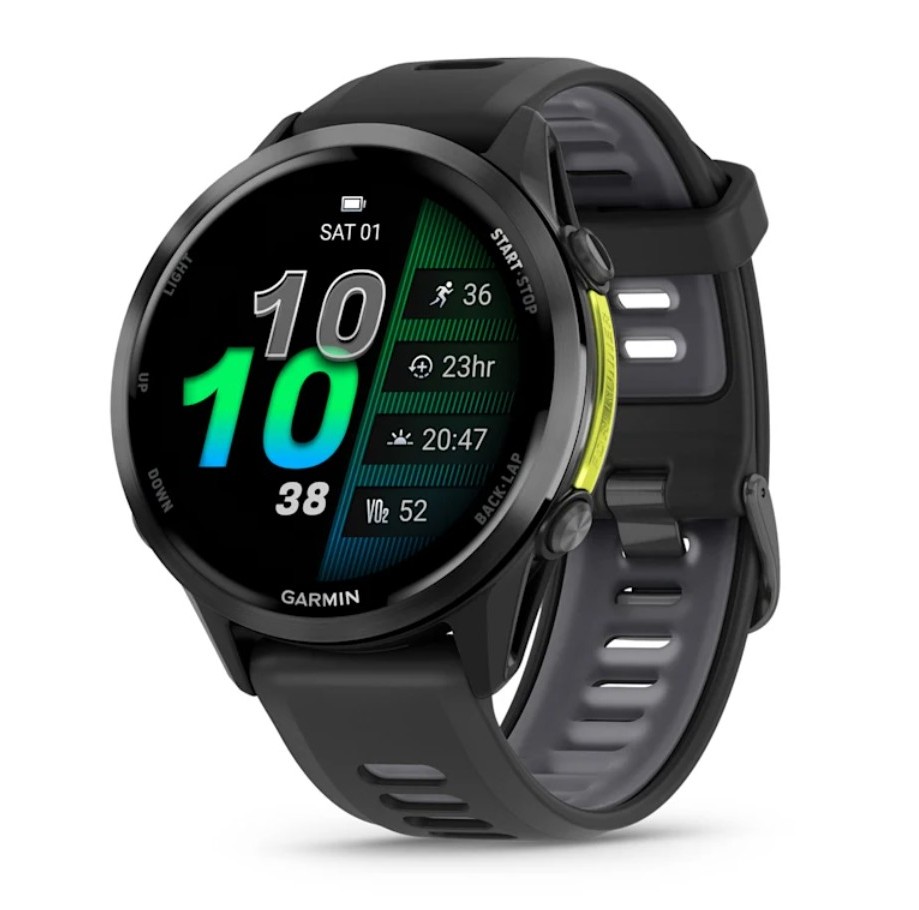
Designed for runners, the Forerunner 970 has much of the functionality of the Fenix 8, but in a lighter-weight package with an AMOLED touchscreen. It still has an impressive battery life of 21 hours with full GPS tracking and all the same health monitoring and coaching as the Fenix 8.
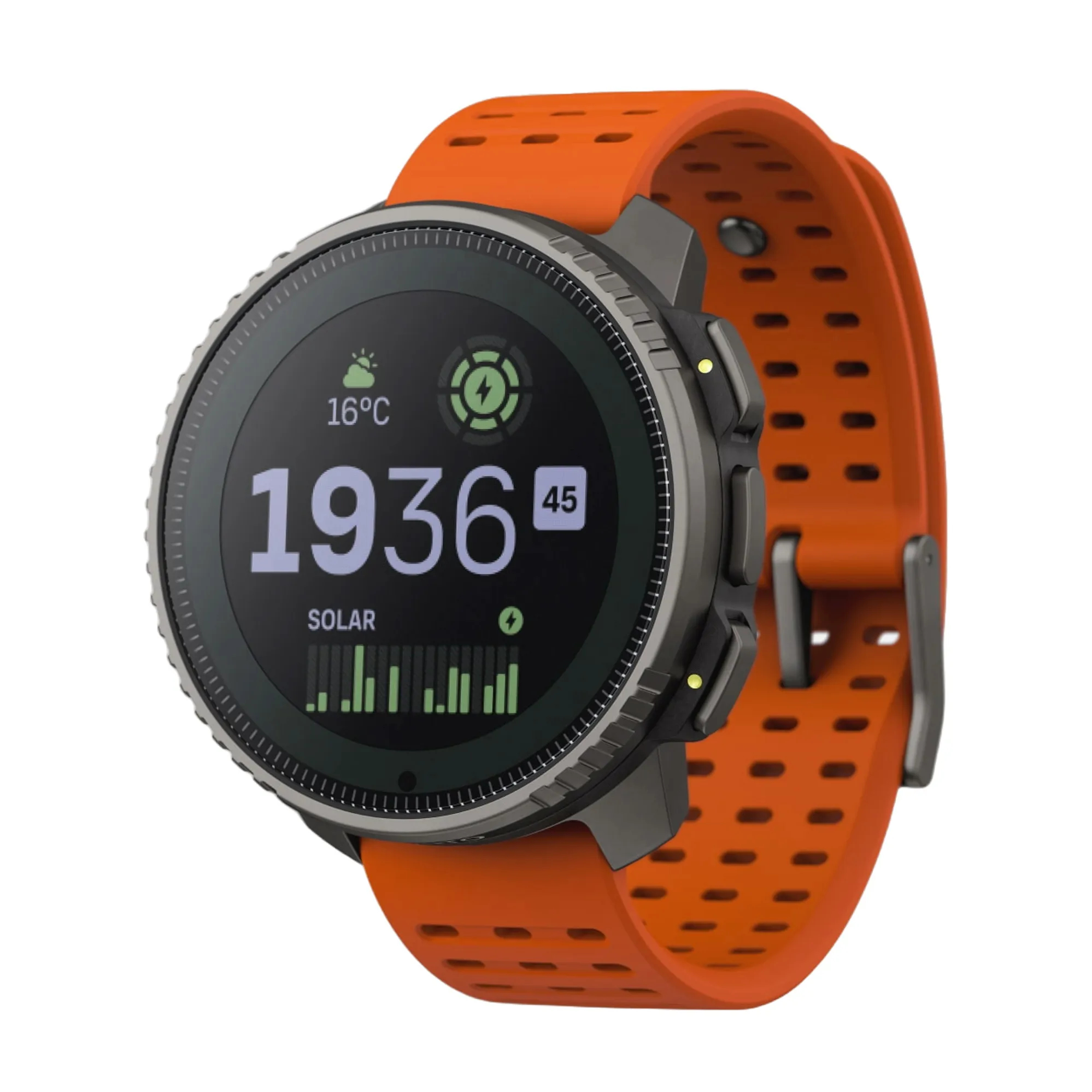
The Suunto Vertical is as robust as it comes, with a sapphire glass screen and rugged case. You can manage the GPS sensitivity to prolong battery life, with up to 280 hours in the lowest power mode and a solar charging option available.
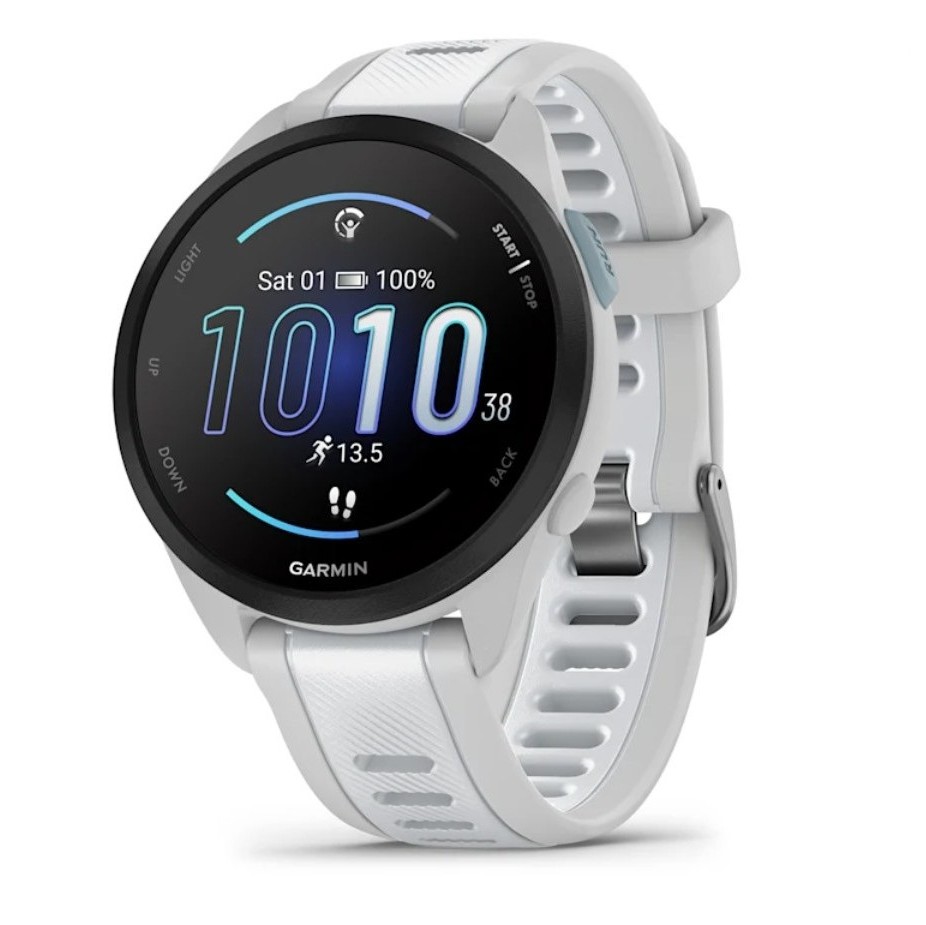
The Garmin Forerunner 165 has a bright AMOLED display and covers many of the functions of Garmin's higher-spec watches at a more affordable price. With two sizes, the option of music onboard and up to 19 hours of GPS tracking, it's a great option for triathletes.
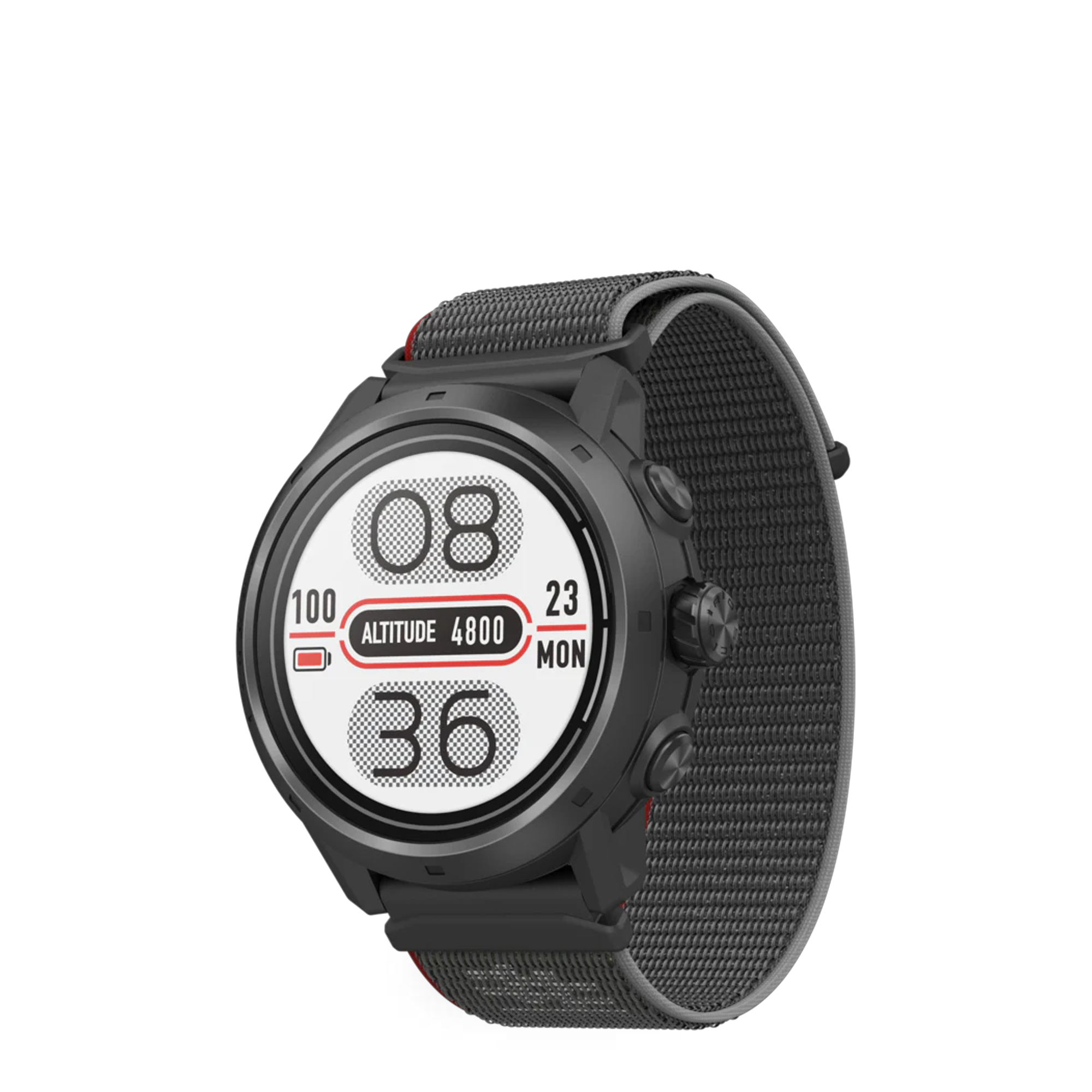
The Coros Apex 2 provides the rich functionality of its premium competitors but at a more affordable price. It will capture up to 60 hours of activity with increased durability and more accurate GPS than the predecessor model.
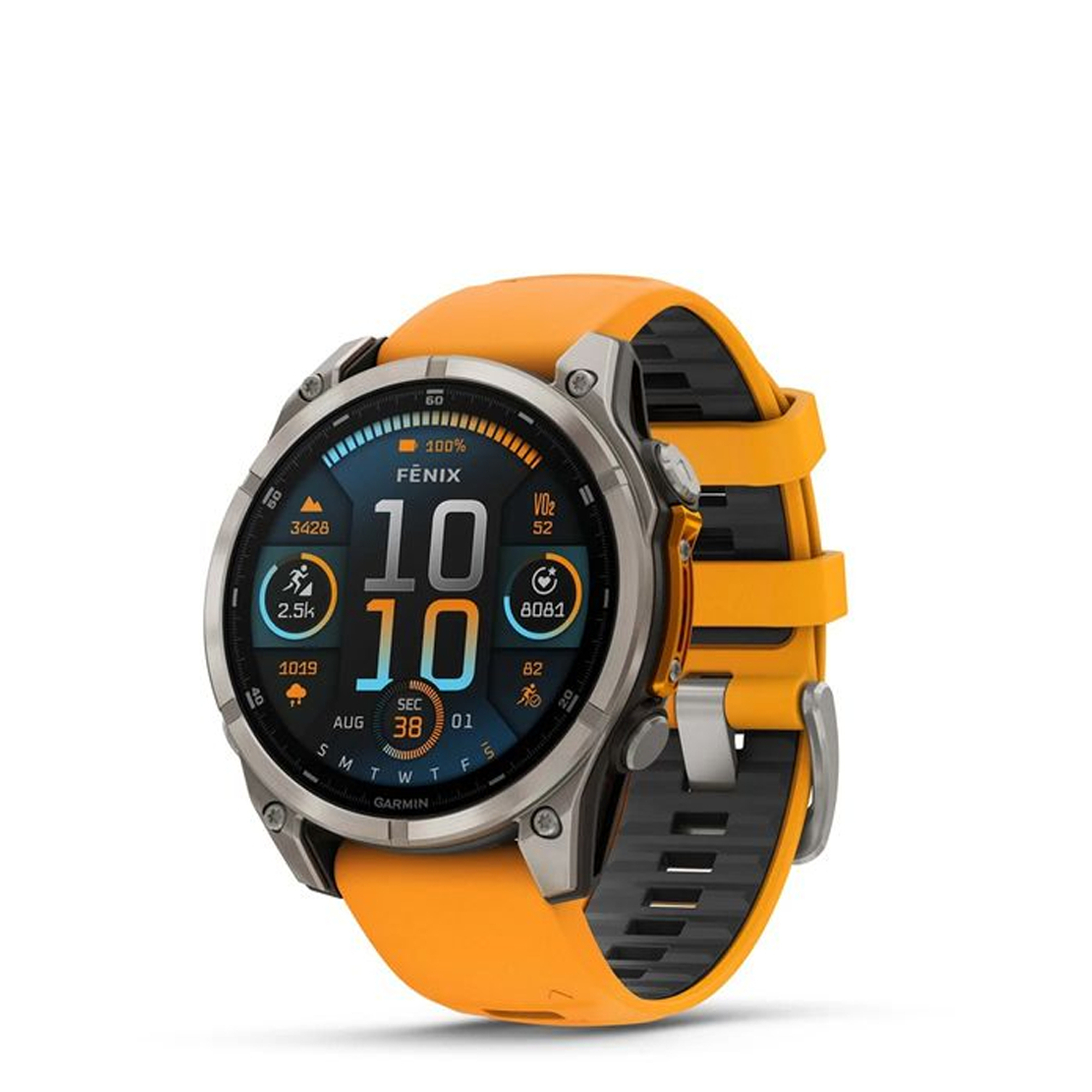
The Garmin Fenix 8 does it all. Not only will it track all your tri legs, but it will monitor your health 24/7 and provide coaching for your training towards your next event, while Garmin Connect provides loads of analysis. It does all this while offering great battery life.
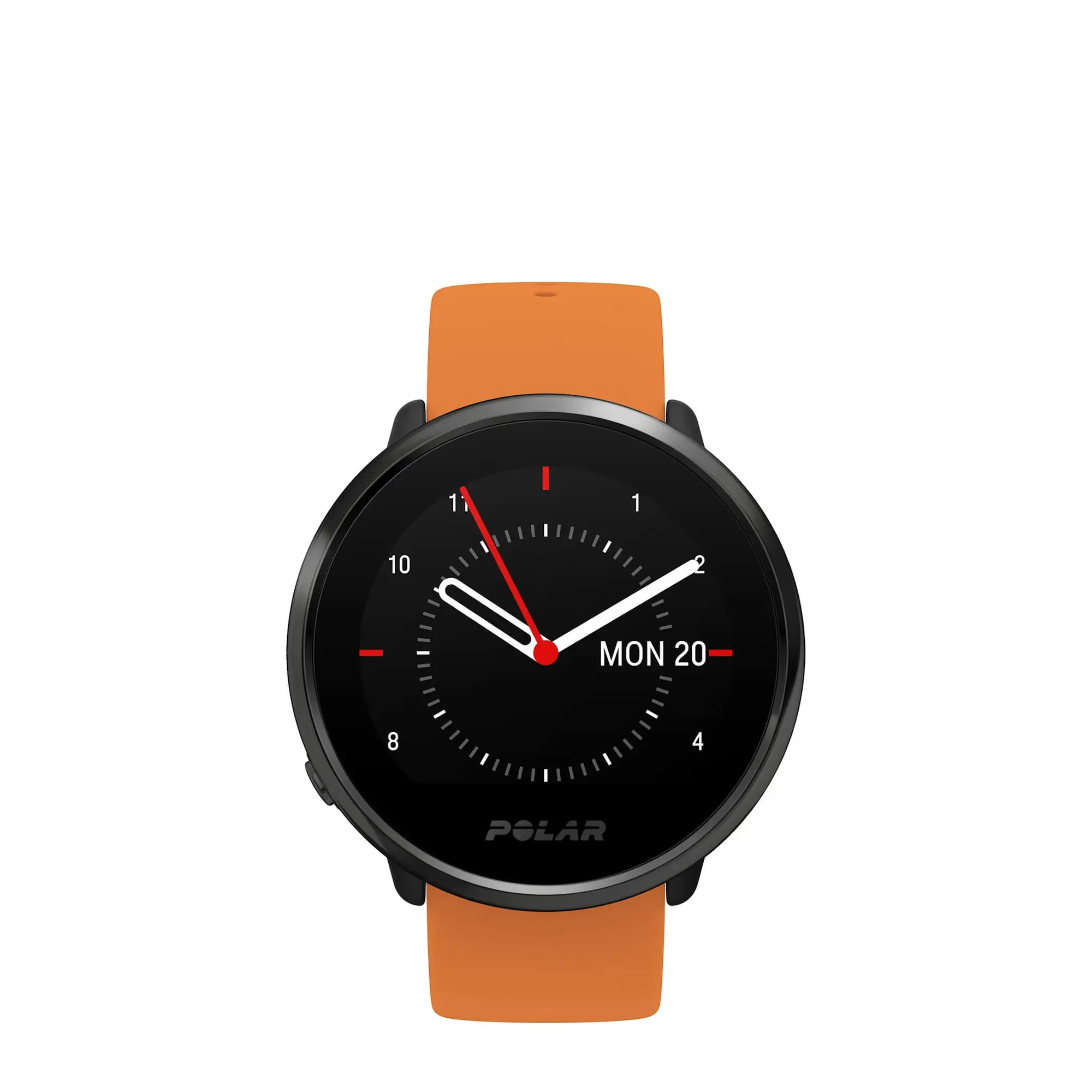
Polar's top-spec smartwatch has a steel bezel and plastic case, offering low weight and durability. It includes a bright AMOLED touchscreen but still offers up to 30 hours of GPS tracking. There's a titanium version as well, which saves weight over steel.
Last updated 13th of June 2025
Checked and updated the products to ensure all the watches recommended in this guide are the best options on the market, up to date and available. New Buy If/Don't Buy If advice was added to streamline buying advice. Further general updates to formats and images were made to improve the overall feel of the guide.
Best triathlon watches
You can trust Cyclingnews
Best overall
1. Garmin Forerunner 970
Specifications
Reasons to buy
Reasons to avoid
✅ You want all Garmin's top-spec features: The Forerunner 970 covers all the tri bases.
✅ You want low weight: The Forerunner watches are lighter than the Fenix series.
❌ You want solar charging: It's one of the few features Garmin doesn't include.
❌ You want a lower price: The Forerunner 970 is top of Garmin's Forerunner range with a price to match.
The Forerunner 970 is at the top of Garmin's Forerunner range and includes an AMOLED screen for a bright display and touchscreen interactivity that makes transitions really easy, with one touch switching between sports. Despite this, it still manages up to 26 hours of all-constellation GPS tracking.
Garmin includes loads of health stats as well, from training readiness scores and suggested workouts to reach your goals, to how well you've slept, with built-in HRM and PulseOx providing 24/7 monitoring and HRV analysis.
Also on board are a microphone and speaker for on-the-go comms and a flashlight if you are out at night. You get colour maps with turn-by-turn directions, round-trip routing and PacePro race strategies as well as on-the-fly ClimbPro ascent profiles. You can play tracks from the watch as you train and use Garmin Pay to speed up payments, leaving your cards or cash at home. Garmin Pay is supported by a good number of US banks, although there are a limited number of UK banks signed up.
Best for durability
2. Suunto Vertical Titanium
Specifications
Reasons to buy
Reasons to avoid
✅ You want battery life options: Suunto provides lots of ways to extend battery life.
✅ You want a tough screen: Sapphire glass makes the Suunto watch tough.
❌ You want less weight and bulk: The Vertical feels weighty compared to alternatives.
❌ You want a fast response: We found the touchscreen a little laggy.
The Suunto Vertical builds on Suunto's robust, military-grade smartwatch functionality, adding dual-band GNSS tracking and solar charging for the titanium model, which allows it to offer a claimed 85 hours of battery life with full GPS tracking and 280 hours with single-band GPS. The lowest power Tour mode will track your activities for 500 hours between charges, with up to a year of basic functions when supplemented with solar charging.
There's WiFi, full offline mapping, HRM, weather, a flashlight and all the fitness and health monitoring you'd expect from a premium smartwatch.
The colour touchscreen has increased in size to 1.4 inches and the resolution has increased to 280x280, although the response time isn't as quick as some competitors. The watch feels quite large as well. Suunto says that its manufacture is 100 percent carbon compensated.
Best entry level Garmin
3. Garmin Forerunner 165
Specifications
Reasons to buy
Reasons to avoid
✅ You want Garmin features without the price tag: The Forerunner 165 is an affordable option.
✅ You want the option of music: Garmin offers the 165 with or without music.
❌ You want lots of storage: Garmin offers just 4GB of memory.
❌ You want all the functionality: Garmin cuts back on features a little to hit the price.
The Forerunner 165 does pretty much everything a triathlete needs, without the bells and whistles, although it does support Garmin Pay and you can choose onboard music.
The display is a colour AMOLED touchscreen with 390 x 390 pixels. You can select which GPS networks to use, which results in tracking for a claimed duration of between 17 hours with all constellations and multi-band GPS for the highest accuracy and 19 hours if you just use single-band GPS GNSS.
The 4GB onboard memory isn't the largest (the Forerunner 970 boasts 32GB), but it's adequate to store 500 songs. There are also optical HRM and PulseOx sensors and you get the full suite of Garmin fitness and activity tracking and Garmin Coach functionality.
Best for value
4. Coros Apex 2 Pro
Specifications
Reasons to buy
Reasons to avoid
✅ You want good value: Coros offers a lot of watch for the price tag.
✅ You want colour choice: Eight different colour options to choose from.
❌ You want a lower price: The non-Pro version is significantly cheaper.
❌ You want high durability: We didn't reckon the Coros was the most robust option.
Coros says that it's upped durability with its second-generation Apex 2 and Apex 2 Pro GPS watches, as well as updating the GPS antenna to dual-band and increasing battery life to a claimed 66 hours of GPS tracking for the Pro model and 40 hours for the standard Apex 2.
Coros says that it's also improved the accuracy of the optical heart rate sensor. There's on-board training load and recovery tracking and HRV as well as structured workout building and example training plans to follow. Other useful features include a nutrition alert.
You can save yourself around a third of the price of the Pro by going for the standard version, which has a slightly lower res, smaller touchscreen. Both Apex 2 models sync over WiFi with the Coros app for more analysis.
Best premium option
5. Garmin Fenix 8
Specifications
Reasons to buy
Reasons to avoid
✅ You want all the bells and whistles: The Fenix 8 is Garmin's premium smartwatch.
✅ You want a choice of case size: With three size options, you can choose the best size for your wrist.
❌ You live somewhere dull: Solar charging is only efficient in bright sunshine.
❌ You want affordable: At around $1,200 / £1,000, the Fenix 8 is pricey.
This watch has got to be our favourite, and it will be yours too if you can afford it. Tipping the scales at close to $1,100 / £1,000, the Garmin Fenix 8 is the most capable watch on this list, with literally two pages of features to explore. It includes a touchscreen, making it easier to interact with, although this is switched off during exercise, so you won't change anything unintentionally.
There are AMOLED or solar charging options, while the Fenix E provides a lower-priced option with a stainless steel rather than a titanium bezel and 16GB instead of 32GB memory. The Fenix 8/E range is also available in three face sizes, a range of bezel colours and multiple different strap options, including titanium.
Where the Fenix 8 scores is if you choose one of the lower power consumption GPS modes when Garmin claims that solar charging more than doubles the battery life to as much as 81 hours for AMOLED or 283 hours for the solar version. There's also an expedition GPS mode that will extend that up to 58 days if you are outdoors for three hours a day somewhere sunny.
Topo maps are included in the Fenix 8, which are maps specifically created for outdoor activities using OpenStreetMap. Of course, this watch comes with excellent GPS and navigation capabilities, as well as onboard music. There is also the PacePro feature, which can give you pace guidance based on your exact terrain.
For long-course triathletes who spend many hours on long training sessions, the Fenix 8 is a great fit. You can easily go all day while using many of the watch's features – you can’t find that in any competitors. There's even a flashlight function.
The watch includes all the usual wireless connectivity capabilities, as well as optical heart rate measurement and pulse oximetry. Designed for triathletes looking to take their long rides to the next level, look no further than the Garmin Fenix 8.
Best for battery life
6. Polar Ignite 3 Titanium
Specifications
Reasons to buy
Reasons to avoid
✅ You want great battery life: There's up to 30 hours of GPS tracking on offer.
✅ You want low weight: At 36g, the Ignite 3 is featherweight.
❌ You want a more rugged style: The round case looks more dress watch than a sports watch.
❌ You want music onboard: There's no onboard music storage, although you can control a smartphone playlist.
Designed for experienced and long-course triathletes, the Polar Ignite 3 includes training, nutrition and exercise planning as well as lifestyle metrics and sleep tracking.
The Ignite 3 has a 416 x 416-pixel AMOLED touchscreen and alongside the titanium version, there's a standard steel bezel option, which will save you some cash.
One feature that you can also find on the Polar Grit X2 and Vantage M3 is the power management feature designed for long-course triathletes and adventurers. Within these settings, users can optimize GPS recording, heart rate sensor readings, and screensaver settings to get the most out of their watch while also saving the battery.
The plastic case and titanium bezel save weight and also improve GPS accuracy, which is excellent overall in the Polar Ignite 3. New watch face interfaces have been added, as well as the ability to control the music being played from an external device. There's a lot of extra planning and analysis functionality in the Polar Flow app as well.
Best low priced option
7. Fitbit Charge 6
Specifications
Reasons to buy
Reasons to avoid
✅ You want a low-priced tracker: The Fitbit does the basics at a low price.
✅ You want a small format: The Fitbit won't get in your way.
❌ You want longer battery life: GPS tracking is only around 5 hours.
❌ You want better GPS accuracy: Fitbit's isn't as accurate as the alternatives.
The Fitbit Charge 6 is a lightweight, compact, affordable option to track your activity and, as with other Fitbit devices, it can also follow your fitness 24/7 and monitor your sleep. There's a bright AMOLED touchscreen that's easy to read, despite the device's size. There's in-built GPS, HRM and PulseOx as well as skin temperature monitoring, Google Maps, Google Wallet, NFC and BLE connectivity.
The Charge 6 is waterproof to 50 metres, so it's good for the swim, although it's 5-hour claimed runtime when tracking activities might be a little low for longer events and training.
The design of the GPS antenna does mean that the Fitbit Charge 6 can't accurately monitor both your position and heart rate at the same time though.
Best for accuracy
8. Polar Grit X2 Pro
Specifications
Reasons to buy
Reasons to avoid
✅ You want accurate heart rate tracking: Polar excels if you don't want to wear a strap all the time.
✅ You want a robust smartwatch: The Grit X2 is as tough as they come.
❌ You want a faster user interface: Polar's isn't as good as the alternatives.
❌ You want better non-GPS battery life: At around 10 days, it's not as good as some alternatives.
Where the Polar Grit X2 Pro shines is in the data. This watch is among the best, with tons of wireless capabilities and super-accurate heart rate tracking. The Grit X2 Pro is built as the name suggests: strong and durable. It’s hard to find a non-titanium watch that can be beaten around as much as this, especially at this price point.
There are loads of data features not limited to just heart rate and GPS. You can also track your recovery and sleep, as well as read into your workout difficulty, all through the Polar Grit X2 Pro. Having both touchscreen and button navigation, you’d expect that this watch is easy to use – but not quite.
The Polar Grit X2 Pro’s UX isn’t the best, especially for a touchscreen smartwatch at this price point. The touchscreen can be slow to respond, which is especially frustrating when you are mid-activity and in need of some quick data or a GPS reroute. The other small downside is the watch's battery life, which isn’t all bad. The GPS life is actually quite good, listed at 43 hours. But the everyday battery life is only ten days, which is quite low relative to comparable smartwatches. However, it only takes an hour to fully recharge – so once again, it’s not all bad.
Best triathlon watches compared
| Row 0 - Cell 0 | Battery life with GPS | Weight | Touchscreen | Onboard music |
Garmin Forerunner 970 | Up to 26 hours | 56g | Yes | Yes |
Suunto Vertical Titanium | Up to 85 hours | 72g | Yes | No |
Garmin Forerunner 165 | Up to 19 hours | 39g | Yes | Optional |
Coros Apex 2 Pro | Up to 60 hours | 66g | Yes | Yes |
Garmin Fenix 8 | Up to 283 hours (Solar) | 73g | Yes | Yes |
Polar Ignite 3 Titanium | Up to 30 hours | 36g | Yes | No |
Fitbit Charge 6 | Up to 5 hours | 30g | Yes | No |
Polar Grit X2 Pro | Up to 43 hours | 79g | Yes | No |
How to choose the best triathlon watch for you
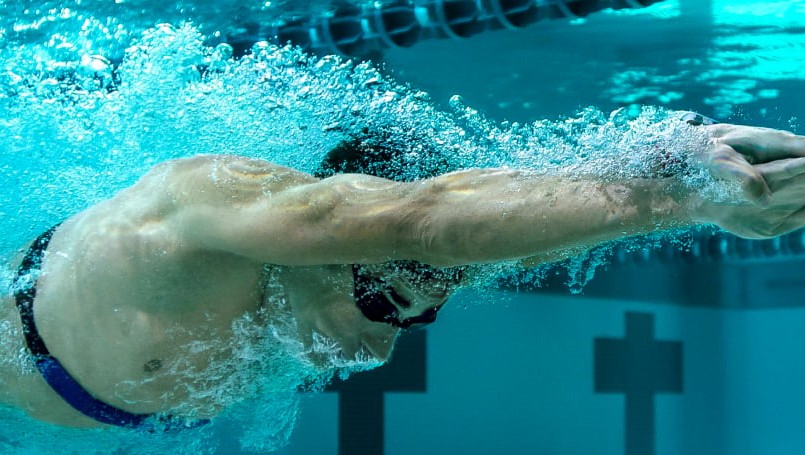
When it comes to choosing a watch for a triathlon, all you need to know is this: choose a watch that provides everything you are looking for.
1. Battery life
If you are a long-distance triathlete, choose a watch that has a long battery life. If you are a short-course triathlete, choose a watch that has the GPS and wireless capabilities you need, but not necessarily one with a long-lasting battery. Battery life and GPS capabilities are two of the more basic metrics that can help you determine which triathlon watch you need, whereas wireless connectivity is an important feature for most.
2. Training features
If you want a watch to use for training and exploring more than racing, then choose a watch with great GPS capabilities, smart technology, the ability to play music, and emergency alerts. But if you’re a beginner looking to track your training for the very first time, go with a cheaper watch with basic GPS capabilities and without all the extras.
There are a few watches loaded with extra features that – frankly – no one ever uses. If you are one of those select few who love diving into the data weeds, go right ahead. But know that it is going to cost you.
3. Smart watch features
Having a watch that continually measures your heart rate (and maybe some other metrics) throughout the day is a great feature for buyers looking for a watch that covers wellness in addition to athletics. With these features, you can better track your recovery and everyday activities.
4. Price
Overall, there are so many options out there when it comes to triathlon watches. There is also a huge price range that starts at less than $200 and goes to well over a thousand dollars. Think about what you will be using the watch for, and exactly what you need from it. You will be paying a premium for extra features, so make sure you’re going to use them before making your final purchase.
To help you go fast, we've also covered the best triathlon shoes for the bike leg and the best triathlon saddles.
Triathlon watches: Frequently asked questions
Which is the best triathlon watch?
The best triathlon watch is the one that fits your needs. For long-distance triathletes, that means a watch with long battery life. Those who like to train with music should choose a triathlon watch that can carry music.
If you want a stylish triathlon watch that you can wear 24/7/365, it’s worth taking a closer look at the pictures to see what you want to be wrapped around your wrist. Some watches for triathlon can be heavy and bulky, particularly for those with thinner wrists, and may feel uncomfortable to sleep in, at least initially, if you want 24/7 fitness metrics.
For the average triathlete, mid-range triathlon watches such as the Garmin Forerunner 165 or Polar Ignite 3 are our favourite options. Those looking for the premium experience can go with a higher-end triathlon watch such as the Garmin Fenix 8, whereas beginners may find that the relatively inexpensive Fitbit Charge 6 fits all their needs.
Are triathlon-specific watches worth it?
For most triathletes, a triathlon-specific watch is almost certainly worth it. What you’ll get is a host of activity and fitness features that cannot be matched by other types of watches.
GPS capability is an area where triathlon-specific watches shine – the accuracy is, again, unmatched. Some watches such as the Garmin Fenix 8 offer super-precise measurements, whereas others like the Fitbit Charge 6 are not as accurate.
Is a touchscreen triathlon watch better than a triathlon watch with buttons?
While touchscreen triathlon watches may seem more intuitive, they are typically not as easy to use as button-operated triathlon watches. There is a learning curve for watches with buttons, but in our experience, it only takes a few days to get used to it.
Button-operated triathlon watches are typically easier to use during training, especially when bouncing around on a run or flying down the road on a bike. A touchscreen may be easier to use on the side of the road, but it requires a bit more precision to hit correctly the first time.
Casual triathletes or fitness fanatics may prefer touchscreen triathlon watches for their ease of use, whereas serious triathletes will prefer a button-operated triathlon watch. You can usually turn off the touchscreen and this may happen automatically when you're tracking an activity.
How we test the best triathlon watches
Reviewing watches means wearing them 24/7 and testing them out in the wind, rain, heat, and everything in between. Some days we wore the watches in the pool or out on the open water, testing the GPS signal in more settings than one.
In addition to the overall feeling of the watch, we tested as many of its features as we could (without breaking the watch, of course). And when we were all done with our activities, we left the watches turned on until their batteries ran out. Some watches took days and some took weeks.
You can find more details of our approach in our how we test page.
The latest race content, interviews, features, reviews and expert buying guides, direct to your inbox!
Zach is a freelance writer, the head of ZNehr Coaching, and an elite-level rider in road, track, and e-racing. He writes about everything cycling-related, from buyer's guides to product reviews and feature articles to power analyses. After earning a Bachelor’s Degree in Exercise Science at Marian University-Indianapolis, Zach discovered a passion for writing that soon turned into a full-fledged career. In between articles, Zach spends his time working with endurance athletes of all abilities and ages at ZNehr Coaching. After entering the sport at age 17, Zach went on to have a wonderful road racing career that included winning the 2017 Collegiate National Time Trial Championships and a 9th place finish at the 2019 US Pro National Time Trial Championships. Nowadays, Zach spends most of his ride time indoors with NeXT eSport.
